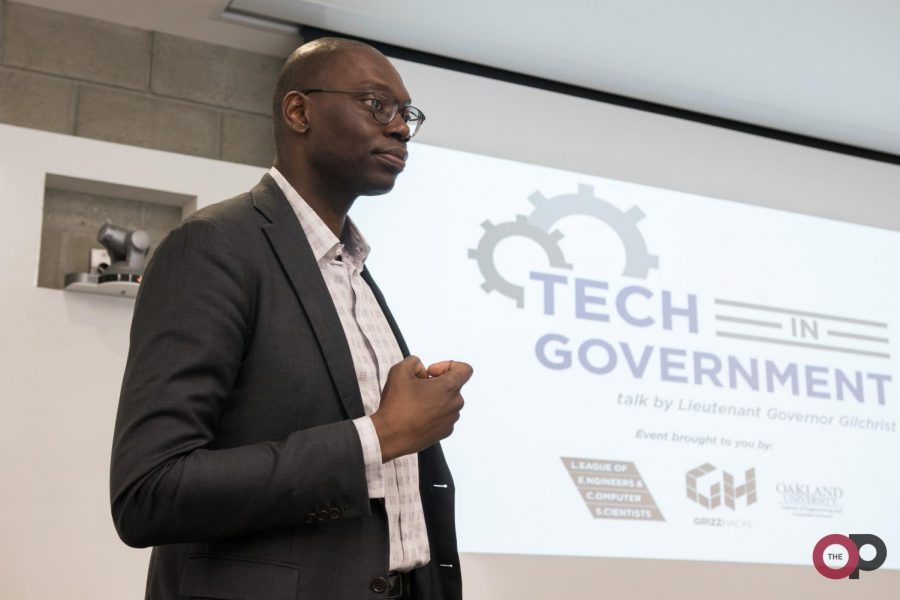Lt. Gov. Gilchrist talks technology
Lt. Gov. Garlin Gilchrist’s secret to red tape? Technology that works.
Gilchrist spoke to Oakland University students about how technology can make governments more efficient at the March 8 “Tech in Government” talk hosted by the League of Engineers and Computer Scientists (LECS) and GrizzHacks. Gilchrist also spoke about what Michigan is doing to prepare for a tech-saturated future.
“Gilchrist studied computer science and computer engineering at the University of Michigan where he graduated with honors in 2005,” said Shriyash Jalukar, LECS treasurer. “After graduating, he spent four years as a software engineer at Microsoft in Seattle, where he helped build SharePoint into one of the fastest growing products in the company’s history.”
In Seattle, Gilchrist joined the 2008 Barack Obama campaign as social media manager, kicking off his techno-political career. On the Obama campaign team, Gilchrist created a national text-messaging program—the first of its kind in the United States.
After Obama, Gilchrist moved from Washington State to Washington, D.C., where he began to work with activist groups Center for Community Change and MoveOn.org as director of new media and national campaign director, respectively.
When Gilchrist returned to Detroit in 2014, he began working for the city as its first ever director of innovation and emerging technologies—a role he established, named and operated himself.
“When we decided we would raise our children in Michigan and in Detroit specifically, where I live, the question was ‘OK, we are coming back from D.C.… What do you want to do?’” Gilchrist said. “I wanted to do something that just impacted the most possible people.”
As director of innovation and emerging technologies, Gilchrist was able to streamline the process for citizens to report non-911 issues, such as dead trees, potholes and clogged storm drains.
“We started by looking at these number one requests,” Gilchrist explained, using trees as his example. “We started the process [of streamlining] by having conversations with [the forestry department]. ‘When you are going to remove a tree, what do you do? What do you need to know about the tree? How do you get that information?’”
After collecting this information and visualizing it on a whiteboard, Gilchrist’s team would spot inefficiencies and cut them down.
“And then, after having understood it and have the process be a straight line and not a maze,” Gilchrist said, “then we could add some transparency to the process.”
This would come in the form of updating people about their requests.
Since Jan. 1, Gilchrist has been the lieutenant governor of Michigan. Despite the change of title, Gilchrist plans to continue using technology to help his political goals.
“I see my role as lieutenant governor [as a way] to empower the people who are currently working in state government, the people who are working alongside state government as allies, and most importantly… to encourage other people to come and join these efforts so we can solve problems for the benefit of all the people in the State of Michigan,” he said.






